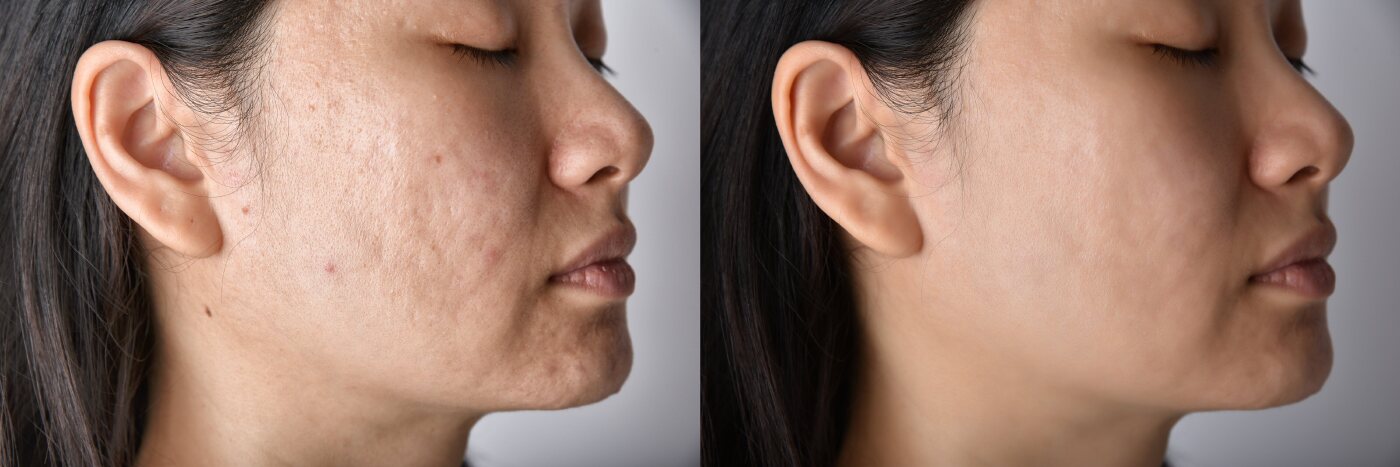Scarring can happen any time there is damage to the skin. For example, it can be caused by surgery, injury, or burns. When scars are in a conspicuous place like the face, are painful, or cause other issues, scar revision surgery may be a good option. In this blog, we’ll go over some common questions on facial scar revision, such as: What kind of scars are best handled with scar revision surgery? And how does scar revision surgery work?
When should you get facial scar revision surgery?
Scar revision surgery is often not the first option. There are more conservative measures your doctor will likely advise trying first. These include microdermabrasion, laser resurfacing, or collagen injections (helpful for scars that are indented). But when these methods don’t help, scar revision surgery may be the best option.
Scar revision surgery can help in several situations. It’s commonly done for cosmetic reasons to improve the appearance of a scar, particularly on the face. Scar revision surgery can also be helpful in the case of painful, itchy, or otherwise bothersome scars. Sometimes, scars can also interfere with movement, and surgery can help restore full range of motion.
Scar revision surgery process
The process of scar revision surgery is different depending on what type of scarring is present. Scar types include keloid, hypertrophic, and contractures. With keloid scarring, the extra scar tissue is removed, and the edges of the skin around the previous scar are stitched together. Skin grafting may also be an option with keloid removal surgery. Removal of hypertrophic scarring is similar to keloid removal. Contracture scarring occurs after losing some skin, which results in tightness after the remaining skin heals together. Burn scars can cause contractures. This can create issues with movement. Scar revision surgery for contracture scarring often involves skin grafting to allow for more skin surface area to eliminate tightness.
How long does facial scar revision surgery take?
The length of scar revision surgery depends on how big the scarring is, the type of scarring, and the procedure the doctor decides is best to perform. It is often an outpatient procedure, but sometimes, especially in the case of large areas of scarring or when skin grafting is necessary, it is done in a hospital setting.
If you have facial scarring and would like to know your options for reducing its appearance or improving function of the area with scarring, contact us using the link here to schedule a consultation. Dr. Edmund Fisher specializes in scarring of the face and will go over your options and discuss which method is likely to have the best outcome for your particular case of scarring.




